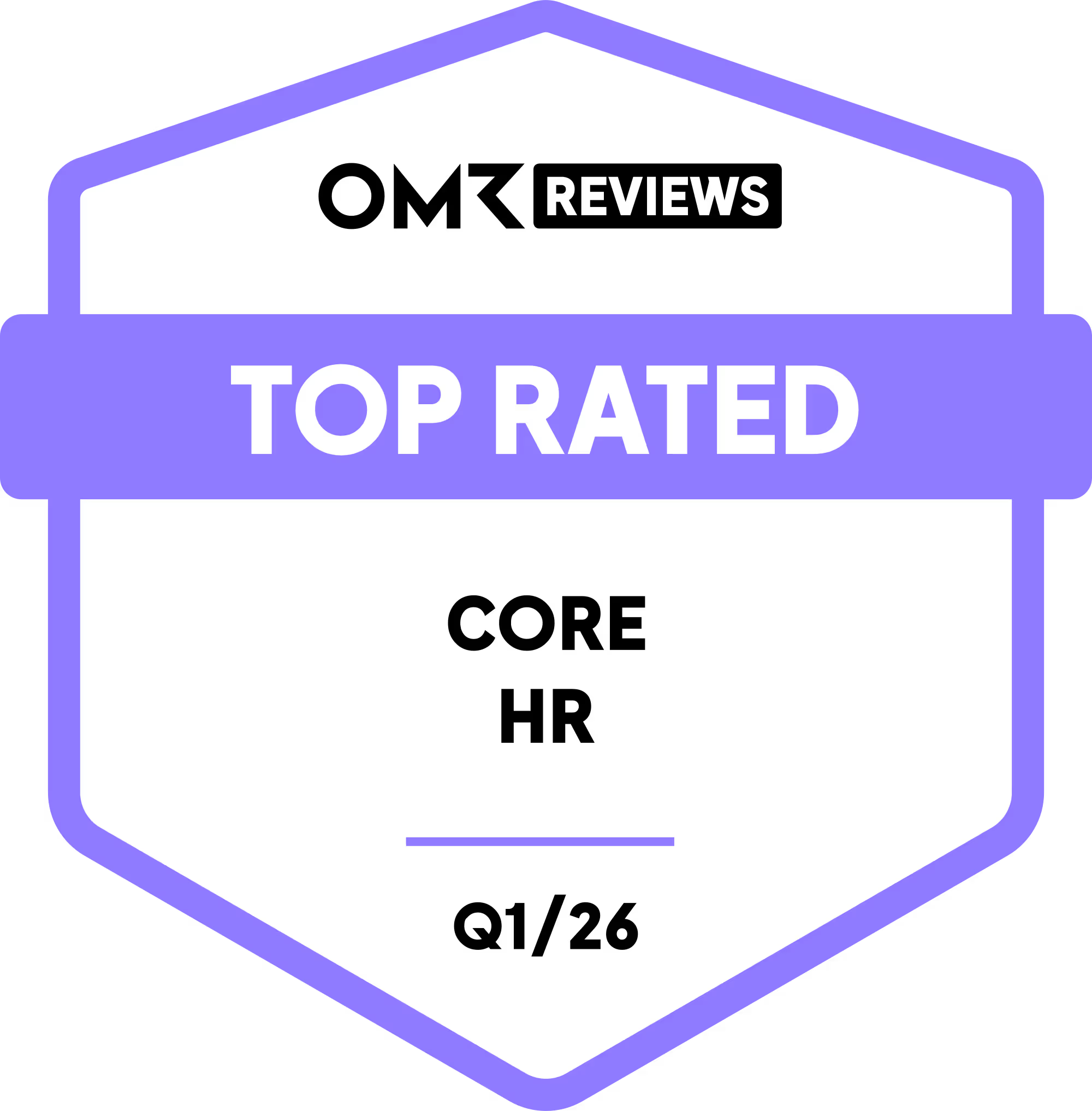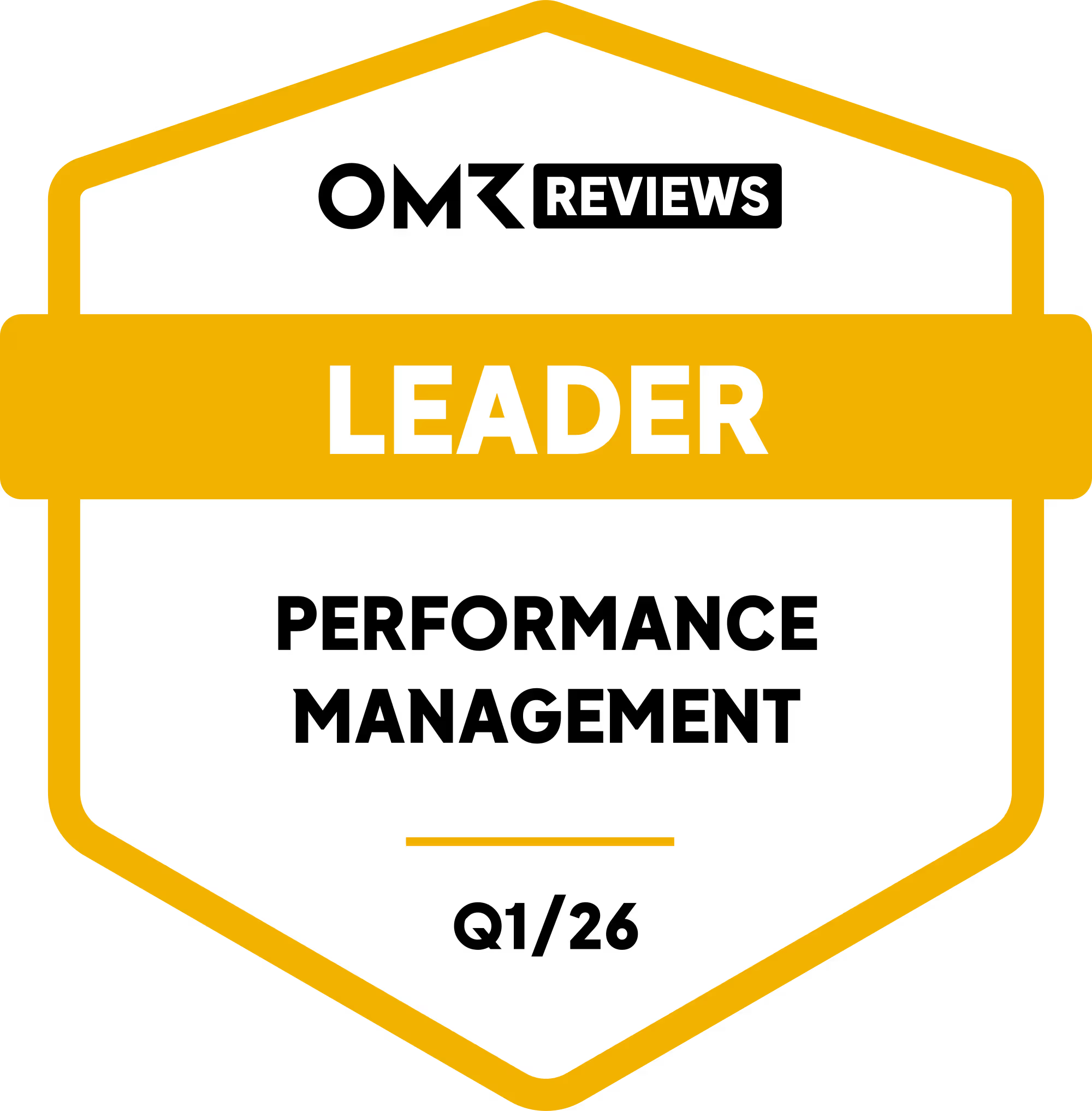12 Vorteile der Schulung von Mitarbeitern für zukünftiges Unternehmenswachstum

HR-Teams stehen vor einer enormen Herausforderung, wenn sie über die Zukunft der Mitarbeiterschulung nachdenken: Neue KI-Fortschritte könnten in naher Zukunft 300 Millionen (1) oder etwa 40% (2) der Arbeitsplätze weltweit gefährden.
Gleichzeitig hat Innovation in der Vergangenheit so viel wirtschaftliches und technologisches Wachstum vorangetrieben, dass dadurch tendenziell mehr Arbeitsplätze geschaffen als überholt werden. (3)
Diese diametral entgegengesetzten Realitäten erinnern uns daran, dass in Zeiten technologischer und wirtschaftlicher Volatilität nur die flexibelsten, kreativsten und am besten ausgebildeten Organisationen gewinnen..
Dennoch kann es schwierig sein, die Vorteile von Schulungen für die Führungskräfte Ihres Unternehmens ohne einen überzeugenden ROI (Return on Investment) zu belegen. In diesem Artikel werden zwölf nachgewiesene Vorteile von Schulungen untersucht, die Ihr Unternehmen erwarten kann, wenn es in die berufliche Weiterentwicklung der Mitarbeiter investiert. Wir werden auch kurz erläutern, warum Teammitglieder an Jobs interessiert sind, die Entwicklungsmöglichkeiten bieten.
- Goldman Sachs, 2023
- Internationaler Währungsfonds, 2024
- Nationales Büro für Wirtschaftsforschung (USA), 2022
👟 Steigern Sie die Agilität Ihrer Mitarbeiter und schaffen Sie ein förderliches Umfeld
Mit Leapsome können Sie benutzerdefinierte, selbst geleitete Schulungen für bestimmte Rollen und ganze Teams erstellen.
👉 Entdecken Sie, was Leapsome Learning für Sie tun kann
Die Bedeutung der Mitarbeiterschulung in einer KI-gestützten Welt
Die Schulung der Mitarbeiter war schon immer entscheidend für den Geschäftserfolg. Doch da KI im Begriff ist, die Zukunft der Arbeit auf bisher unvorhergesehene Weise zu verändern, Entwicklung der Teammitglieder ist jetzt nicht verhandelbar.
„Historisch gesehen haben sich Automatisierung und Informationstechnologie tendenziell auf Routineaufgaben ausgewirkt“, schrieb die Geschäftsführerin des Internationalen Währungsfonds (IWF), Kristalina Georgieva, für die IWF-Blog. „Aber eines der Dinge, die KI von anderen abheben, ist ihre Fähigkeit, sich auf hochqualifizierte Arbeitsplätze auszuwirken. Infolgedessen sind Industrieländer im Vergleich zu Schwellen- und Entwicklungsländern größeren Risiken durch KI ausgesetzt — aber auch mehr Möglichkeiten, ihre Vorteile zu nutzen.“
Die Mitarbeiter sind sich bewusst, dass KI ihre aktuellen Jobs gefährdet. Das könnte der Grund sein vier von fünf Teammitgliedern Laut dem Workplace Learning Report 2024 von LinkedIn möchten sie mehr über die Implementierung von KI in ihrer Arbeit erfahren. Dem gleichen Bericht zufolge 90% der Führungskräfte sind sich einig, dass Schulungen jetzt ihre wichtigste Strategie zur Mitarbeiterbindung sein sollten. in Anerkennung dieser gestiegenen Nachfrage nach Entwicklung der Mitarbeiter.
Selbst wenn man die KI-Konversation beiseite legt, Schulungen bereichern das gesamte Mitarbeitererlebnis und befähigen die Teammitglieder dazu beruflich vorankommen. 84% der Unternehmen sagen, dass die Förderung einer Lernkultur ein positives Arbeitsumfeld schafft, das dazu beiträgt, ihre Mitarbeiter zu motivieren und zu engagieren; die Mitarbeiter schätzen dies so sehr, dass 21% von ihnen ein Unternehmen verlassen würden, um anderswo Entwicklungsmöglichkeiten zu nutzen. Deshalb sollten Lernen und Entwicklung ein integraler Bestandteil Ihrer Strategie sein, wenn Sie in Unterstützung von Menschen.
12 Weiterbildungsleistungen für Mitarbeiter für Unternehmen
Mitarbeiterentwicklung kann weitreichende Auswirkungen haben. Hier sind die wichtigsten Vorteile von Schulungen, die Unternehmen in Anspruch nehmen können:

1. Innovation vorantreiben

Einer der großen Vorteile von Schulungen am Arbeitsplatz besteht darin, dass sie die Mitarbeiter dazu ermutigen, erfinderischer zu sein — aber nur, wenn Personal- und L&D-Führungskräfte dazu bereit sind Seien Sie aufgeschlossen und geben Sie Teammitgliedern Zugang zu den richtigen Ressourcen.
Denken Sie an Pixar: den Mitbegründer des Unternehmens, Eddie Catmull, sagte, die revolutionären Animationstechniken seines Teams seien das Ergebnis der umfangreichen Schulungsprogramme des Unternehmens. Die Mitarbeiter können aus einer Bibliothek mit Kursen zu verschiedenen technischen Fähigkeiten wie Drehbuch und Zeichnen auswählen, was sie lernen möchten.
Sie können auch eine Seite aus Duncan Wardles Playbook nehmen. Der ehemalige Vizepräsident für Innovation und Kreativität bei The Walt Disney Company erklärte, Kreativität bedeute mehr, als den Mitarbeitern zu sagen, sie sollten „anders denken, Risiken eingehen oder in den Raum gehen, um ein Brainstorming zu machen“, schrieb er für Harvard Business Review. „Wir mussten ihnen die Werkzeuge an die Hand geben, um Kreativität bei der Arbeit zur Selbstverständlichkeit werden zu lassen. Ein Koch mit einem kompletten Messersatz hat mehr Selbstvertrauen in der Küche als ein Koch mit einer einzigen, stumpfen Klinge. Mit den richtigen Werkzeugen können Menschen ihr Handwerk hervorragend beherrschen. Um sicherzustellen, dass unsere Teams nach Belieben kreativ sein konnten, mussten wir ihnen Ressourcen zur Verfügung stellen, um ihre Kreativität zu fördern.“
Hier sind einige der wichtigsten Erkenntnisse aus Disneys neuem Ansatz in Bezug auf die Vorteile von Mitarbeiterschulungen:
- Mache „Was wäre wenn?“ eine wichtige Frage — „Schreiben Sie zunächst alle Regeln Ihrer Branche auf“, sagte Wardle. „Wählen Sie zweitens eine Regel aus und überlegen Sie sich, wie Sie sie auf provokative Weise brechen können, sodass sie nicht mehr gilt. Auf diese Weise können Sie auf Ihren Gedankenfluss zugreifen, den Ihr Fachwissen und Ihre Erfahrung ermöglichen.“
- Fragen Sie „wie sonst?“ um mehr Kreativität anzuregen — Finden Sie neue Wege, um Lösungen außerhalb der etablierten Methoden neu zu formulieren und neu zu formulieren. Diese Strategie ermöglichte es dem Team von Disney, den Umsatz um 3% pro Quartal zu steigern, ohne die Eintrittsgebühren für Themenparks zu erhöhen.
- Geben Sie den Menschen mit Verspieltheit mehr Zeit zum Nachdenken — Laut Disneys ehemaligem VP of Innovation and Creativity haben die meisten „Mitarbeiter“ immer noch keine Zeit zum Nachdenken. Deshalb kommen sie außerhalb des Büros auf ihre besten Ideen. Unser bewusstes und unterbewusstes Gehirn neigt dazu, bei der Arbeit abgeschottet zu sein. Wenn wir frei denken können, zum Beispiel beim Duschen oder Sport, sind wir oft plötzlich kreativer und verspielter.“
2. Steigerung von Leistung und Produktivität
„Das Training hat Möglichkeiten für abteilungsübergreifende Zusammenarbeit und Teamarbeit geschaffen und unsere allgemeine Teamdynamik verbessert. Nachdem unser Kundenservice-Team beispielsweise eine Verkaufsschulung erhalten hatte, verzeichneten wir beispielsweise einen Anstieg der abgeschlossenen Geschäfte um 20%, was zu einem deutlichen Umsatzwachstum führte.“
— Shri Ganeshram, Gründer und CEO von Markise
Ein weiterer wichtiger Vorteil von Aus- und Weiterbildung ist Mitarbeiter in die Lage versetzen, effizienter zu arbeiten — aber wie das aussieht, ist je nach Rolle und Branche unterschiedlich. Ein Softwareentwickler kann nach einer Schulung lernen, Fehler schneller zu beheben, während ein Verkäufer möglicherweise Techniken entwickelt, um die unterschiedlichen Bedürfnisse potenzieller Kunden einzuschätzen.
Wenn Teammitglieder effizienter arbeiten, verbessert sich auch die Unternehmensleistung. Studien zeigen dass Unternehmen, die in Schulungen investieren, eine um 59% höhere Wachstumswahrscheinlichkeit haben (und eine um 27% höhere Wahrscheinlichkeit haben, kosteneffizient zu sein).
3. Verringerung der Notwendigkeit einer Beaufsichtigung

Wenn Sie Mitarbeiter schulen, werden sie unabhängiger — und die Art und Weise, wie sie Beratung bevorzugen, kann sich ändern. Zum Beispiel, anstatt zu erwarten, dass ein Manager für Fragen zur Verfügung steht während wenn sie eine bestimmte Aufgabe erledigen, bitten sie vielleicht einfach ihren Vorgesetzten, Feedback zu geben, sobald sie fertig sind. Und wenn die Leute nicht so viel Aufsicht benötigen, kann das dem gesamten Team zugute kommen:
- Manager können mehr Zeit in Schulungsinitiativen investieren, um die Fähigkeiten des Teams zu verbessern.
- Die Mitarbeiter arbeiten effizienter, wenn sie nicht so oft auf die Beantwortung ihrer Fragen warten oder jemanden um Hilfe bitten müssen.
- Alle Teammitglieder werden mehr Kapazitäten haben, um sich bei Bedarf gegenseitig zu helfen.
- Der geringere Zeitaufwand für die Abteilungsleiter ermöglicht es ihnen, den Mitarbeitern eine eingehendere Beratung zu bieten.
Den Teammitgliedern relevante, wertvolle Schulungs- und Entwicklungsmöglichkeiten zu bieten, ermöglicht es ihnen, unabhängiger zu arbeiten und Selbstvertrauen aufzubauen — was die Arbeitszufriedenheit erhöht.
4. Schaffung von mehr Möglichkeiten für interne Beförderung

Ein großer Teil der Definition beruflicher Ziele und Karriereentwicklung Opportunities bietet Managern und Mitarbeitern die Möglichkeit, zu evaluieren, welche Lern- und Entwicklungsinitiativen priorisiert werden sollten. Insgesamt können Investitionen in die Schulung Ihrer Mitarbeiter Ihnen dabei helfen, die Vorgehensweise Ihres Unternehmens im Bereich des Mitarbeiterförderungsmanagements zu verfeinern.
Den Mitarbeitern mehr Möglichkeiten zu geben, die Vorteile der Aus- und Weiterbildung ihrer Mitarbeiter zu nutzen, kann den Beförderungsprozess beschleunigen, da sie die Fähigkeiten und Kenntnisse, die sie benötigen, schneller erwerben können. Durch die Einrichtung eines Lernprogramms in Ihrem Unternehmen erhalten Sie einen klareren Überblick über die Fortschritte Ihres Teams und darüber, wer möglicherweise für bevorstehende Stellen in Frage kommt.
5. Bereichernde Kommunikation

Einer der Hauptvorteile eines Schulungsprogramms ist die Förderung von Transparenz und Kommunikation. Schließlich können Schulungsprogramme den Mitarbeitern ein tieferes Verständnis ihrer Rollen vermitteln, indem sie Erwartungen definieren und zeigen, wie hohe Leistung aussieht.
Wenn Sie Teams übergreifend schulen, tragen Sie auch dazu bei, ein Verständnis zwischen Kollegen zu entwickeln. Einblicke in die Arbeitsprozesse und Herausforderungen anderer Abteilungen zu gewinnen, ist besonders für Teams von Vorteil, die miteinander in Beziehung stehen und häufig Feedback austauschen. Ein Beispiel dafür wären Vertriebs- und Produktteams, die darüber diskutieren, welche neuen Funktionen potenzielle Kunden wünschen.
Ein Leistungsmanagementsystem, das auch Trainingsanalysen bietet (wie Leapsome!) kann Ihnen helfen, Ihrem Team Unternehmensprozesse und die Gründe hinter wichtigen Entscheidungen zu erklären. Sie können zum Beispiel den Lernfortschritt nutzen und Feedback zur Entwicklung um zu verdeutlichen, warum für Berichte während des Zeitraums eine bestimmte Gehaltsspanne gilt Gehaltsüberprüfungen.
6. Zunehmende Ausrichtung auf die Unternehmensziele
Investitionen in die Mitarbeiterentwicklung können die Mission und die Werte Ihres Unternehmens verdeutlichen und stärken. Wenn Sie regelmäßig Weiterbildungsmöglichkeiten anbieten, wissen die Teammitglieder, dass Ihr Unternehmen dem Wissensaustausch und der beruflichen Entwicklung Priorität einräumt. Sie werden auch sehen, dass Sie Ihre Mitarbeiter wertschätzen.
Schulungen können auch die Richtung Ihres Unternehmens verdeutlichen. Nehmen wir an, Sie kündigen an, dass einer Ihrer Ziele und zentrale Ergebnisse (OKRs) reduziert die Kundenfluktuation um 10%; Sie können diese Botschaft noch verstärken, indem Sie Ihr Kundenerfolgsteam in ein Schulungsprogramm zur Kundenzufriedenheit einschreiben.
7. Förderung der Agilität

72% der Arbeitgeber Ich denke, regelmäßige Schulungen sorgen für dynamischere Organisationen. Das liegt daran, dass es Menschen leichter fällt, sich an Veränderungen anzupassen, wenn sie über solide Fähigkeiten verfügen.
Eine solche Widerstandsfähigkeit ist in den unvorhersehbaren Zeiten von unschätzbarem Wert KI-Explosion und ein US-Rezession knapp vermieden. „Der Aufstieg von generative KI, wie Chatbots und Bildgeneratoren, hat die Technologiebranche erschüttert (...) und Führungskräfte dazu veranlasst, Investoren zu versprechen, dass die Fortschritte die Welt revolutionieren und ihnen helfen werden, viel Geld zu verdienen „, schrieb der Tech-Reporter Gerrit De Vynck für die Washington Post. „Die seit langem bestehenden Bedenken, dass KI den Menschen Arbeitsplätze wegnehmen könnte, haben an Dringlichkeit gewonnen, da die Gesetzgeber darüber diskutieren, wie die Technologie gesetzlich geregelt werden kann.“
Zum Glück können Schulungen Unternehmen helfen, anpassungsfähig zu bleiben. Wenn Mitarbeiter für die Besetzung offener Stellen entwickelt werden, verringert sich das Risiko, dass wichtige Stellen leer bleiben. Das bedeutet, weniger Zeit für die Rekrutierung aufzuwenden und Belohnung von Leistungsträgern, die sich in Ihrem Unternehmen weiterentwickeln möchten. Das ist kein Wunder 51% der Personalmanager bilden ihre Teams weiter, um Qualifikationslücken zu schließen, anstatt um Talente zu konkurrieren.
8. Unternehmensprozesse effizienter gestalten
Schulungen helfen den Mitarbeitern, genauer und gründlicher zu arbeiten. Das bedeutet, dass Ihre Mitarbeiter weniger Fehler machen, deren Behebung Zeit in Anspruch nimmt, und die Wahrscheinlichkeit, dass die aktuellen Prozesse optimiert werden, steigt. Dies zeigt erneut, wie sich Investitionen in Lernen und Entwicklung positiv auf den internen Geschäftsbetrieb auswirken können.
Außerdem ist die Vermittlung relevanter Kenntnisse und Fähigkeiten für Aufgaben, die auf Teamarbeit angewiesen sind, von entscheidender Bedeutung. Wenn Sie Ihre Mitarbeiter nicht angemessen geschult haben, werden sie nicht in der Lage sein, bestmöglich zusammenzuarbeiten, was den Arbeitsablauf des gesamten Teams behindern könnte. Stellen Sie sicher, dass Ihre Mitarbeiter mit Ihren Unternehmenszielen, aktuellen Projekten und Produkten oder Dienstleistungen bestens vertraut sind, um die Kommunikation und Zusammenarbeit im gesamten Unternehmen zu verbessern.
9. Gewinnung von Top-Talenten
80% der Arbeitssuchenden Berücksichtigen Sie die Entwicklungsmöglichkeiten eines Unternehmens, wenn Sie sich für eine Stelle bewerben. Wenn Sie mehr Schulungsprogramme anbieten als Ihre Mitbewerber, können Sie Kandidaten überzeugen.
Die Schulung der Mitarbeiter erleichtert auch den Onboarding-Prozess. Gallup stellte kürzlich fest, dass Neueinstellungen 2,6x wahrscheinlicher mit ihrer Arbeit zufrieden zu sein, wenn ihre Erstausbildung außergewöhnlich ist. Investitionen in Lernen und Entwicklung ziehen die richtigen Leute an und helfen Ihnen, neue wichtige Teammitglieder an sich zu binden.
10. Verbesserung der Kundenzufriedenheit
Schulungsinitiativen, die die Arbeitsleistung der Mitarbeiter steigern, können zu einem besseren Kundenservice führen. Dies ist insbesondere im Vertrieb oder in anderen Rollen mit Kundenkontakt der Fall, wo Lernprogramme die Reaktionszeit und den Wert direkt verbessern können. Natürlich führt die Bereitstellung eines qualitativ hochwertigeren Produkts oder einer Dienstleistung auch zu höheren Bewertungen und Rezensionen sowie zu mehr Stammkunden.
Wenn Mitarbeiter ihr Repertoire um neue Fähigkeiten erweitern, können Sie Ihre Kunden weiter beeindrucken, indem Sie Ihr Leistungsspektrum erweitern. Zum Beispiel könnte eine Anwaltskanzlei ihre Mitarbeiter in Sozialarbeit schulen, um schutzbedürftige Mandanten besser betreuen zu können.
11. Stärkung Ihrer Unternehmensmarke
Obwohl Sie der Schulung Ihrer Mitarbeiter Vorrang vor der Steigerung Ihres Markenrufs einräumen sollten, gehen beide oft Hand in Hand. Gut ausgebildete, kompetente Mitarbeiter können zum Image Ihres Unternehmens in der Öffentlichkeit beitragen. Sie können sogar Ihre Schulungsprogramme oder die Zeugnisse Ihrer Teammitglieder als Beweis für die Qualität Ihrer Produkte oder Dienstleistungen verwenden.
12. Erhöhung der Kundenbindungsraten
Ein weiterer Zweck der Aus- und Weiterbildung: die Reduzierung der Fluktuationsraten Ihres Unternehmens. Eine kürzlich durchgeführte SHRM-Studie hat gezeigt, dass 76% der Arbeitnehmer sind eher bereit, bei einer Organisation zu bleiben, die berufliche Weiterentwicklung anbietet. Das liegt daran, dass Schulungen viele Vorteile für Mitarbeiter haben, auf die wir im Folgenden näher eingehen werden.
Die Bedeutung der Mitarbeiterschulung für Einzelpersonen

Die Mitarbeiter sollten im Mittelpunkt der Schulungsentscheidungen stehen. Um die Bedürfnisse Ihrer Mitarbeiter zu erfüllen, müssen Sie wissen, wie wichtig Aus- und Weiterbildung am Arbeitsplatz sind. Hier finden Sie eine Liste der wichtigsten Vorteile.
1. Weniger Hindernisse für den beruflichen Aufstieg
Einer der Hauptgründe, warum Fachkräfte sich weiterbilden wollen, ist der Aufstieg in ihrer Organisation.. Wenn ihre Aufgaben am Arbeitsplatz jedoch keine ausreichenden Entwicklungsmöglichkeiten bieten, ist es unwahrscheinlich, dass sie die Fähigkeiten erlernen, die sie für ihren Fortschritt benötigen. Für Mitarbeiter könnte ein Mangel an Weiterbildungsmöglichkeiten darauf hindeuten, dass Ihr Unternehmen Entwicklungsbemühungen nicht schätzt oder dem internen Wachstum keine Priorität einräumt.
2. Steigerung der Motivation und des Engagements
Leapsome hat das entdeckt 54% der Mitarbeiter müssen neue Fähigkeiten entwickeln, um sich mit ihrer Arbeit zu beschäftigen — und viele wissenschaftliche Studien verbinde Lernen mit Glück. Daher könnte das Anbieten von mehr Schulungsmöglichkeiten die Motivation und das Engagement Ihrer Mitarbeiter in Ihrem Unternehmen steigern.
Aber es reicht nicht aus, Schulungen anzubieten — stellen Sie sicher, dass Sie zufrieden sind Auch der spezifische Schulungsbedarf der Menschen. Verhalten Umfragen zum Mitarbeiterengagement um die Wirkung Ihrer aktuellen Entwicklungsprogramme zu messen und herauszufinden, welche anderen Lernmöglichkeiten Mitarbeiter benötigen, um sich mit ihrer Arbeit stärker verbunden zu fühlen. Modelle zur Mitarbeiterbindung kann Ihnen Frameworks für den Einstieg zur Verfügung stellen.
3. Zusätzliche Arbeitsplatzsicherheit
Das Angebot umfassender Mitarbeiterschulungen macht die Teammitglieder agiler. Anstatt Mitarbeiter entlassen zu müssen, weil sie mit Budgetkürzungen zu kämpfen haben, können Unternehmen sie möglicherweise umschulen oder ihnen neue Rollen zuweisen. Dies ist besonders für moderne Arbeitnehmer relevant, da sich die für Positionen erforderlichen Fähigkeiten von Zeit zu Zeit geändert haben 25% in den letzten sieben Jahren — und wird sich weiterentwickeln.
4. Ein ausgeglicheneres Spielfeld
Die Mitarbeiter haben unterschiedliche Hintergründe und haben unterschiedliche Anforderungen an ihre Zeit und ihr Geld. Beispielsweise haben Mitarbeiter aus unterrepräsentierten Gruppen möglicherweise weniger Zugang zu Ressourcen als ihre Kollegen. Und einige Teammitglieder haben möglicherweise freie Abende und Wochenenden, um unabhängig zu lernen, während andere möglicherweise volle Betreuungspläne oder andere persönliche Verpflichtungen haben. Situationen wie diese können zu einem unfairen Wettbewerbsvorteil zwischen Kollegen führen.
Bieten Sie eine Reihe von Schulungsprogrammen für Mitarbeiter kann Ihren Arbeitsplatz gerechter machen. Mitarbeiter können während der Arbeitszeit auf die Ressourcen zur beruflichen Weiterentwicklung zugreifen, die sie benötigen, ohne Geld für ihr berufliches Wachstum ausgeben zu müssen. Sie werden auch positiver sein, wenn ihre Mitarbeiter Gehaltserhöhungen und Beförderungen erhalten, wenn sie wissen, dass sie die gleichen Chancen haben, diese zu erreichen.
Entwickeln Sie Ihre Mitarbeiter mit Leapsome
.webp)
Mitarbeiterschulungen, die für eine KI- und technologiegestützte Welt aktualisiert wurden, können einen starken Einfluss auf Ihr Unternehmen haben. Es steigert die Geschäftsleistung, stärkt die Unternehmenskultur und hilft den Menschen, erfolgreich zu sein.
Plattformen wie Leapsome können Ihnen helfen, eine Lernkultur in Ihrem Unternehmen aufzubauen. Sprungend Lernen verfügt über alle Tools, die Sie benötigen, um Entwicklungsprogramme zu verwalten und maßgeschneiderte Schulungen zu erstellen, die auf die spezifischen Bedürfnisse der Mitarbeiter zugeschnitten sind. Sie können Multimedia-Materialien aus internen und externen Quellen hochladen, um jedem Lernstil gerecht zu werden. Sie können Schulungsworkshops auch einfach verwalten, indem Sie den Teammitgliedern automatisch Kurse zuweisen und einen klaren Überblick über deren Fortschritte erhalten. Schließlich bietet dir unser neuer Learning Marketplace Zugriff auf vorgefertigte, hochwertige Kurse von Ethena und Lawpilots.
Und das Beste daran: Wir gestalten unsere Tools modular, sodass sie in Ihr aktuelles Geschäftsmodell passen. Auf diese Weise können Sie Ihr Lern- und Entwicklungsprogramm revolutionieren, ohne interne Prozesse überarbeiten zu müssen.
🌱 Fördern Sie eine Lernkultur in Ihrem Unternehmen
Mit Leapsome Learning können Sie Schulungskurse erstellen, die auf Ihre individuellen Geschäftsanforderungen zugeschnitten sind, und Sie erhalten Zugriff auf hochwertige Kurse in unserem Learning Marketplace.
👉 Eine Demo buchen
Verwandte Artikel
Zurück zum BlogSind Sie bereit, Ihre Strategie zur Mitarbeiterförderung zu verbessern?
your People operations?
Informieren Sie sich über unsere Leistungsbeurteilungen, Ziele und OKRs, Engagement-Umfragen, Onboarding und mehr.
.webp)
.webp)
 Fordern Sie noch heute eine Demo an
Fordern Sie noch heute eine Demo an




































